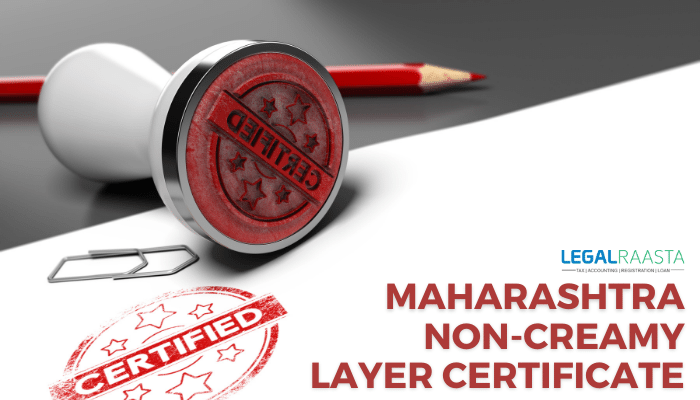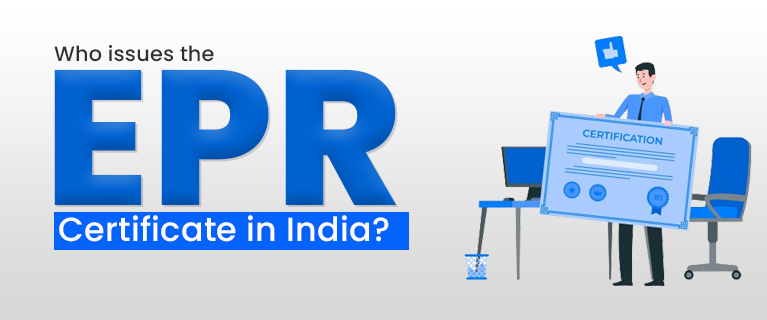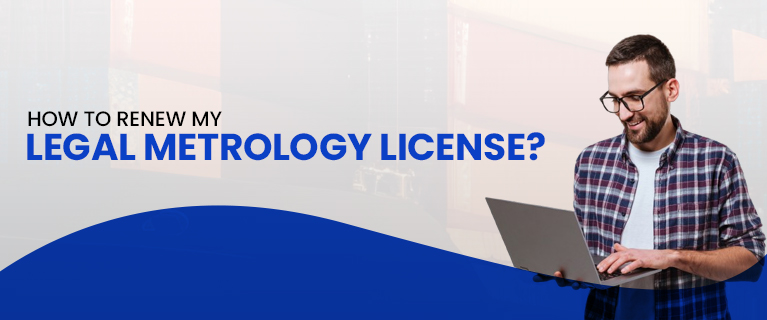Maharashtra Non-Creamy Layer Certificate
The notion of reservations was established in India's constitution to remedy inequity and prejudice faced by impoverished communities selected by the Indian government. The major goal of India's reservation system is to enhance the social and educational status of the disadvantaged Scheduled Caste (SC) and Scheduled Tribe (ST) people, and consequently their lives. People from the OBC community, like those from the General Category, are given similar opportunities in all fields. The Other Backward Class (OBC) is divided into two categories based on the family's annual income: Creamy Layer and Non-Creamy Layer. People belonging to the non-creamy layer must obtain a caste certificate in order to benefit from government services. The procedure for obtaining the Maharashtra Non-Creamy Layer Certificate is detailed in this article.
Creamy and Non-Creamy Layer Difference
The reserved category benefits do not apply to the creamy layer since they are treated the same as the General Category. The non-creamy layer, on the other hand, is simply referred to as the OBC (Other Backward Class). People belonging to the OBC community receive a creamy layer or non-creamy layer certificate dependent on their socioeconomic standing. Apart from the pay, there are other requirements that must be met for government employees to fall into the non-creamy layer. This was done in order to disperse the reservation's benefits across the Backward Class's weakest portions.
Criteria for Non-Creamy Layer
- The parents' annual income, including salaries and other sources of income, should not exceed Rs. 8 lakhs.
- Neither of the recipient's parents shall be a Central or State Government Group A / Class I Officer.
- Neither of the recipient's parents shall occupy any constitutional post or be employed in any PSU, Bank, Insurance Company, Educational Institution, or private employment comparable to Group A / Class I service under the Central / State Government.
- If neither or one of the parents is a Group B / Class II Officer in the Central / State Government, the person shall be considered non-creamy layer.
- If neither or one of the parents works in a PSU, Bank, Insurance Company, Educational Institution, or in private employment comparable to Group B / Class II service under the Central / State Government, the individual will be classified as a non-creamy layer.
- If a person's parents, of whom only the father is a Group-B officer, enter Group-A at the age of 40 or earlier, he or she will not fall into the non-creamy layer.
- For government personnel, the only requirement for non-creamy layer status is their office cadre, not their wage cap. All other government employees with an annual salary of more than Rs. 8 lakh are still eligible for OBC non-creamy layer certificates provided they work in the Central or State Government's class 3 cadre.
Benefits of Non-Creamy Layer
Those who belong to the Non-Creamy Layer, unlike those who belong to the Creamy Layer, are entitled to all of the advantages granted by the government and other sectors for the reserved group.
In comparison to the Creamy Layer, the Non-Creamy Layer has better access to education, job, and government sponsors.
Eligibility Criteria for Maharashtra Non-Creamy Layer Certificate
The following eligibility requirements must be met in order to obtain a Non-Creamy Layer Certificate in Maharashtra.
- The applicant must be an Indian citizen.
- The applicant must be a Maharashtra permanent resident.
- To be eligible, the applicant must be a member of the specified group or class.
- The applicant must be a long-term resident of the current address.
- The annual income of the applicant's parents (in the event of a minor) or the applicant's household (including other sources of income) should not exceed Rs.8 lakhs (Land, property, business).
- The income from agriculture is not taken into account.
- The applicant must meet the non-creamy layer's additional requirements, which are listed below.
Documents Required for Maharashtra Non-Creamy Layer Certificate
Attach the document list to the application form as shown below.
Mandatory Documents
- Voter ID card/passport/Aadhaar Card as proof of identity
- Proof of address (electricity bill/water bill)
- Self-attested xerox of caste certificate / If uneducated birth registration extract / Caste and residence certificate provided by Sarpanch/Local Police/Corporator
- Income proof – Income tax return for the previous three financial years if the applicant is salaried, self-employed, or a businessman; affidavit stating income for the previous three years if the applicant is a farmer or laborer; income certificate from Tahsildar for the previous three years if the applicant is a farmer or laborer
- Affidavit in support of caste
Additional Documents to be Furnished
- A receipt for property taxes
- If a relative's caste certificate and a genealogical affidavit with details of the relative's relation to the relative are not available, a relative's caste certificate and a genealogical affidavit with specifics of the relative's relation to the relative
- If the applicant has migrated from another district/state, a caste certificate is issued by the competent authorities in that state/district for the applicant's father.
- In the case of married women,
- Proof of caste prior to marriage, as per point no. 3
- Marriage proof — marriage certificate and name change announcement in the Gazette
- If the candidate is a Muslim (either of the following documents may be submitted)
- If his/her father's caste certificate is not accessible, a Tehsildar investigation report is required.
- Muslim Societies that are registered can issue caste certificates.
- Proof of a relative's caste (grandfather/father/brother/sister/uncle/aunt or any other blood relative)
- Certificate of graduation from high school
- A copy of your birth/death certificate
- A copy of the first page of your service book if you work for the government.
- A document from the Department of Social Justice certifying caste.
Competent Authority
In Maharashtra, the Revenue Department is in charge of issuing Non-Creamy Layer Certificates (OBC Certificates). The application is processed by a concerned Tehsildar in the applicant's district. In Maharashtra, the Sub-Divisional Officer is the official who has the authority to approve or deny an application for a non-creamy layer certificate. The First Appellate Officer is the Additional Collector, and the Second Appellate Officer is the Collector.
Service Charge
The service charge for the issue of a Non-Creamy Layer Certificate in Maharashtra is around Rs. 50.
Processing Time
Within 21 days of receipt of the application, the certificate will be processed and issued.
Validity
The validity duration of a Non-Creamy Layer certificate is not set in stone. The authority's certificates are currently valid for three years from the date of issuing.
Application Procedure for Maharashtra Non-Creamy Layer Certificate
Individuals interested in obtaining a Maharashtra non-creamy layer certificate can do so either offline or online.
Offline Application Process
To apply for the certificate, the applicant must go to the Sub-Divisional Officer's office. The application form should be obtained from the office or downloaded from the copy provided below.
Submit the completed form, along with the required documents and pay, to the appropriate officer.
Online Application Process
Maharashtra's government provides online services through its official website, aaple sarkar.
Follow the procedures below to apply for a non-creamy layer certificate in Maharashtra online.
Step 1: To apply for a Maharashtra non-creamy layer certificate, go to
aaple sarkar's official website.
Registration of Users
The citizen must be a registered user in order to apply to this portal.
Step 2: To register, go to the login page and click 'Register Here.' The page will take you to the registration form.
Ctrl + Y is the Marathi keyboard shortcut.
Step 3: It gives you two registration options. Choose from the available choices.
- Registration Using UID Number:
By verifying the UID, a user id and password are created. Download the citizen's information and save it in the user profile after completing eKYC.
2. Self-registration:
By verifying the UID, a user id and password are created. Download the citizen's information and save it in the user profile after completing eKYC.
Step 4: The registration form displays after selecting self-registration. Fill in the required information, which includes the following.
- Information about the applicant
- Applicant's Address (as specified in the document)
- Verification of Mobile Number and Username
- Attach a photograph
Note: The photograph should be between 5KB and 20KB in size. JPEG is the preferred image format. The photograph's width should be 160 pixels. The photograph's height should be between 200 and 212 pixels.
5. Proof Of Identity (Any -1)
6. Proof Of Address (Any -1)
After this process, there is no need to include a photo, identity verification, or address proof when applying online for any service.
Step 5: When you've finished filling out the registration form, click Register
.
Login
Step 6: Enter your login credentials in the Login section and choose your district from the drop-down box. Click log in to be taken to the application portal.
Step 7: Click the Non-Creamy Layer service after selecting the Revenue Department.
Step 8: The Non-Creamy Layer certificate application form displays. Submit the form after filling in the relevant information.
Upload the aforementioned documents in the format specified.
Pay the required amount. Submit the form.
Track Application Status
From the drop-down menu, choose Revenue Department.
From the drop-down menu, choose Revenue Services.
From the drop-down menu, choose Non-Creamy Layer.
You can check the status of your application by entering the Application ID you received when you applied for the certificate. You can check the status of your application after entering a valid Application ID.
Verify Certificate:
The digitally signed certificate will be released after all application processes have been completed.
From the drop-down menu, choose Revenue Department.
From the drop-down menu, choose Revenue Services.
From the drop-down menu, choose Non-Creamy Layer.
Verify your certificate authentication by entering the 18-digit barcode value.
Download and print the certificate after it has been verified.
Application for Appeal Three
Citizens can file the first and second appeals with senior officers within the department, and the third and final appeal with this commission, according to the Right to Service Act, in the event of a delay in providing services or denial of services without good justification.
Read, also: OBC certificate: Tamil Nadu caste certificate
All About the Common Account Number – CAN










